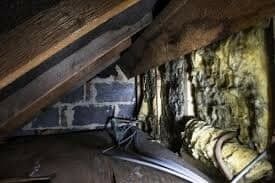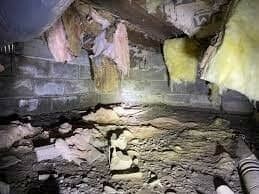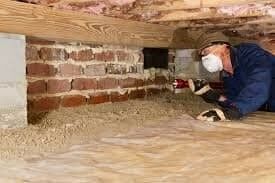
Introduction
The crawl space is an essential part of any home, providing additional space for electrical wiring, plumbing components, and HVAC equipment. However, proper ventilation is crucial to maintain the health and integrity of the crawl space. This article will explore different options for crawl space ventilation, their benefits, and the various systems available.
Why Is Crawl Space Ventilation Important?
Crawl space ventilation plays a crucial role in maintaining a healthy and functional home. Here are some reasons why proper crawl space ventilation is important:
- Moisture Control: Adequate ventilation helps control moisture and prevents the buildup of excess humidity. This reduces the risk of mold and mildew growth, wood rot, and other moisture-related issues.
- Odor Control: Proper ventilation helps in controlling and eliminating unwanted odors that may originate from the crawl space.
- Air Quality: Crawl space ventilation allows for the circulation of fresh air, improving overall indoor air quality.
- Energy Efficiency: Proper ventilation helps prevent the buildup of heat and moisture in the crawl space, reducing the workload on the HVAC system and improving energy efficiency.
- Pest Control: Adequate ventilation can deter pests such as rodents and insects from entering the crawl space.
- Structural Integrity: Proper ventilation helps prevent excess moisture from affecting the structural integrity of the home, such as rotting wooden supports.
Crawl Space Ventilation Options
There are several options available for crawl space ventilation. Here are some of the most commonly used methods:

1. Vented Crawl Space
A vented crawl space utilizes openings or vents in the walls or foundation to allow for the exchange of air between the crawl space and the exterior environment. This method relies on natural airflow to provide ventilation. Vented crawl spaces are common in older homes and may require additional measures, such as vapor barriers, to control moisture effectively.
2. Closed Crawl Space
A closed crawl space, also known as an encapsulated or conditioned crawl space, involves sealing off the crawl space from the external environment. This is done using vapor barriers on the floor and walls, insulation, and a properly sealed crawl space door. Closed crawl spaces utilize mechanical systems, such as dehumidifiers and HVAC ducts, to control humidity and temperature.
3. Hybrid Crawl Space
A hybrid crawl space combines elements of both vented and closed crawl space systems. It may include a combination of natural ventilation through vents and the use of moisture control systems, such as encapsulation and dehumidifiers, to provide optimal ventilation and moisture control.
Crawl Space Ventilation Systems
Various ventilation systems can be installed in crawl spaces to provide effective airflow and moisture control. Here are some commonly used systems:
1. Passive Vents
Passive vents are openings in the crawl space walls or foundation that allow for natural airflow. These vents do not require any mechanical components and rely on wind and temperature differences for ventilation.

2. Powered Vents
Powered vents are mechanical ventilation systems that use fans to actively circulate air in the crawl space. These vents can be controlled manually or automated based on humidity levels or timers.
3. Dehumidifiers
Dehumidifiers are devices specifically designed to control humidity levels in enclosed spaces. They remove excess moisture from the air, preventing mold and mildew growth.
4. HVAC Integration
Integrating the crawl space with the home’s HVAC system allows for controlled ventilation and temperature regulation. This can be achieved through the installation of supply and return ducts in the crawl space.
5. Crawl Space Fans
Crawl space fans are installed to improve air circulation in the crawl space. These fans can be used in conjunction with passive vents or powered vents to enhance ventilation.
Conclusion
In conclusion, proper crawl space ventilation is essential for maintaining a healthy and functional home. Understanding the different ventilation options and systems available can help homeowners make informed decisions regarding their crawl space. Whether it’s through vented crawl spaces, closed crawl spaces, or hybrid systems, ensuring adequate ventilation will contribute to improved air quality, moisture control, and energy efficiency in the home.



